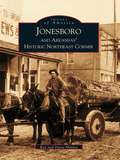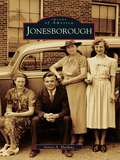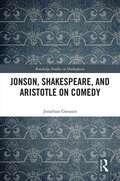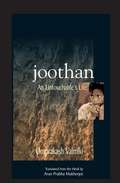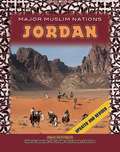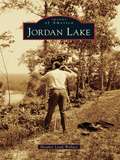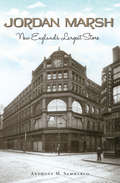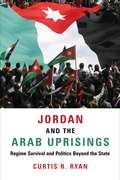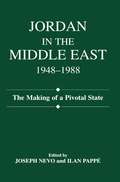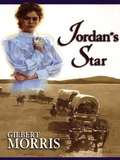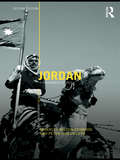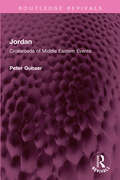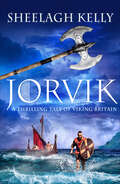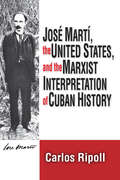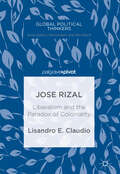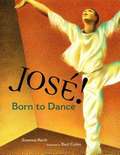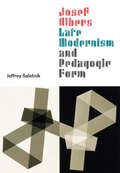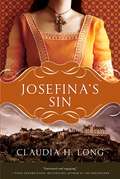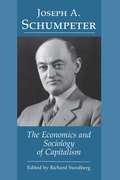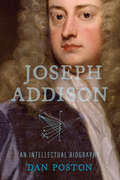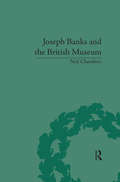- Table View
- List View
Jonesboro and Arkansas's Historic Northeast Corner (Images of America)
by Ray Hanley Diane HanleyWhen Union soldiers returned North after the Civil War, they brought home stories of a sparsely populated area with bountiful timber and potential for homes and farms. Over the next 50 years, first by wagon train and then by railroads, settlers came to build not only homes and farms but also thriving communities in the Clay, Greene, and Craighead counties of northeastern Arkansas. Today, visitors and residents of the area see the bustle of Jonesboro and the thriving Arkansas State University. Readers of Jonesboro and Arkansas' Historic Northeast Corner will discover Jonesboro as it lived a century ago, a promising town of 7,000 citizens. As the 20th Century opened, modern and attractive towns such as Corning, Piggott, Rector, and Paragould began to thrive. The evolution of these historic areas-from slow-paced villages with dirt roads and horse-drawn wagons to the bustling towns of the late 20th century-is chronicled in this Images of America edition.
Jonesborough (Images of America)
by Sonya A. HaskinsOriginally established in 1779 as the seat of Washington County, North Carolina, Jonesborough is the oldest incorporated town in Tennessee. Early pioneers were given land grants to settle west of the mountains, but by 1784, they no longer trusted their political leaders in North Carolina. They created their own local government and established the state of Franklin, naming Jonesborough the original capital of the "lost" 14th state. Never recognized by Congress, Franklin eventually fizzled out and Tennessee was formed. Although Tennessee was a slave-holding state prior to the Civil War, Jonesborough produced the earliest regularly published periodical devoted to abolishing slavery. Today, Jonesborough is listed on the National Register of Historic Places, with many buildings fully restored. In this volume, readers will see the Christopher Taylor House, which was built about 1778, and the Chester Inn, which hosted many famous guests in its original days, including Presidents Andrew Jackson, Andrew Johnson, and James K. Polk.
Jonson, Shakespeare, and Aristotle on Comedy (Routledge Studies in Shakespeare)
by Jonathan GoossenJonson, Shakespeare, and Aristotle on Comedy relates new understandings of Aristotle’s dramatic theory to the comedy of Ben Jonson and William Shakespeare. Typically, scholars of Renaissance drama have treated Aristotle’s theory only as a possible historical influence on Jonson’s and Shakespeare’s drama, focusing primarily on their tragedies. Yet recent classical scholarship has undone important misconceptions about Aristotle’s Poetics held by early modern commentators and fleshed out the theory of comedy latent within it. By first synthesizing these developments and then treating them as an interpretive theory, rather than simply an historical influence, this book demonstrates a remarkable consonance between Aristotelian principles of plot and its emotional effect, on the one hand, and the comedy of Shakespeare and Jonson, on the other. In doing so, it also reveals surprising similarities between these seemingly divergent dramatists.
Jony Ive: The Genius Behind Apple's Greatest Products
by Leander KahneyIn 1997, Steve Jobs returned to Apple as CEO with the unenviable task of turning around the company he had founded. One night, Jobs discovered a scruffy British designer toiling away at Apple¿s corporate headquarters, surrounded by hundreds of sketches and prototypes. It was then that Jobs realized he had found a talent who could reverse the company¿s long decline. That young designer was Jony Ive. Jony Ive¿s collaboration with Jobs would produce some of the world¿s most iconic technology products, including the iMac, iPod, iPad, and iPhone. The designs have not only made Apple a hugely valuable company, they¿ve overturned entire industries, built a loyal fan base, and created a globally powerful brand. Along the way, Jony Ive has become the world¿s leading technology innovator, won countless design awards, earned a place on the 2013 Time 100 list, and was even knighted for his services to design and enterprise. Yet despite his triumphs, little is known about the shy and soft-spoken whiz whom Jobs referred to as his "spiritual partner" at Apple. Jony Ive reveals the true story of Apple¿s real innovator-in-chief. Leander Kahney, the bestselling author of Inside Steve¿s Brain, offers a detailed portrait of a creative genius. He shows us how Jony Ive went from an English art school student with dyslexia to the man whose immense insights have altered the pattern of our lives. From his early interest in industrial design, fostered by his designer father, through his education at Newcastle Polytechnic and meteoric rise at Apple, we discover the principles and practices that he developed to become the designer of his generation. Based on interviews with Jony Ive¿s former colleagues and Kahney¿s own familiarity with the world of Apple, this book gives insight into how Jony Ive (now senior vice president of design) has redefined the ways in which we work, entertain, and communicate with one another.
Joothan: An Untouchable's Life
by Omprakash Valmiki Arun Prabha MukherjeeOmprakash Valmiki describes his life as an untouchable, or Dalit, in the newly independent India of the 1950s. "Joothan" refers to scraps of food left on a plate, destined for the garbage or animals. India's untouchables have been forced to accept and eat joothan for centuries, and the word encapsulates the pain, humiliation, and poverty of a community forced to live at the bottom of India's social pyramid. Although untouchability was abolished in 1949, Dalits continued to face discrimination, economic deprivation, violence, and ridicule. Valmiki shares his heroic struggle to survive a preordained life of perpetual physical and mental persecution and his transformation into a speaking subject under the influence of the great Dalit political leader, B. R. Ambedkar. A document of the long-silenced and long-denied sufferings of the Dalits, Joothan is a major contribution to the archives of Dalit history and a manifesto for the revolutionary transformation of society and human consciousness.
Jordan
by Anna Carew-MillerThough small and resource poor, the Hashemite Kingdom of Jordan plays a crucial role in the affairs of the volatile Middle East. A moderate Arab country, Jordan borders not only Israel and the West Bank, but also Syria, Iraq, and Saudi Arabia. This strategic location- along with the nuanced and forward-looking foreign policy crafted by its longtime monarch, King Hussein, and carried on by his son and successor, King Abdullah II?has made Jordan a key to peace and stability in the Middle East.Domestically, Jordan faces many of the same economic hurdles developing nations all over the world must confront. But it also enjoys a tremendous advantage: a highly educated, adaptable workforce.
Jordan Lake
by Heather Leigh WallaceIn 1945, Hurricane 9 rocked the Carolinas, severely flooding and incapacitating the New Hope Valley area. As a result, Congress directed the U.S. Army Corps of Engineers to study water resource needs in the area. Originally named the New Hope Project, it received funding in 1963, and construction began in 1967. In 1974, after lake supporter Sen. B. Everett Jordan passed away, the lake and dam were renamed in his honor. The senator never saw the lake finished, as it was not filled until 1982. Jordan Lake encompasses 46,768 acres of which 13,900 acres are flooded to form a reservoir at 216 feet above mean sea level. The lake provides recreation, wildlife conservation, and water supply to surrounding cities. Jordan Lake also attracts one of the largest concentrations of bald eagles in the southeast. With photographs from the flood of 1945 to a group baptism in 2007, these stories and more will make you want to spend an afternoon at Jordan Lake.
Jordan Marsh: New England’s Largest Store (Landmarks)
by Anthony M. SammarcoJordan Marsh opened its first store in 1851 on Milk Street in Boston selling assorted dry goods. Following the Civil War, the store moved to Winthrop Square and later to Washington Street between Summer and Avon Streets. The new five-story building, designed by Winslow & Wetherell, unveiled the novel concept of department shopping under one roof. It attracted shoppers by offering personal service with the adage that the customer is always right, easy credit, art exhibitions and musical performances. By the 1970s, it had become a regional New England icon and the largest department store chain in the nation. Author and historian Anthony Sammarco reveals the fascinating history of Boston’s beloved Jordan Marsh.
Jordan and the Arab Uprisings: Regime Survival and Politics Beyond the State (Columbia Studies in Middle East Politics)
by Curtis R. RyanIn 2011, as the Arab uprisings spread across the Middle East, Jordan remained more stable than any of its neighbors. Despite strife at its borders and an influx of refugees connected to the Syrian civil war and the rise of ISIS, as well as its own version of the Arab Spring with protests and popular mobilization demanding change, Jordan managed to avoid political upheaval. How did the regime survive in the face of the pressures unleashed by the Arab uprisings? What does its resilience tell us about the prospects for reform or revolutionary change?In Jordan and the Arab Uprisings, Curtis R. Ryan explains how Jordan weathered the turmoil of the Arab Spring. Crossing divides between state and society, government and opposition, Ryan analyzes key features of Jordanian politics, including Islamist and leftist opposition parties, youth movements, and other forms of activism, as well as struggles over elections, reform, and identity. He details regime survival strategies, laying out how the monarchy has held out the possibility of reform while also seeking to coopt and contain its opponents. Ryan demonstrates how domestic politics were affected by both regional unrest and international support for the regime, and how regime survival and security concerns trumped hopes for greater change. While the Arab Spring may be over, Ryan shows that political activism in Jordan is not, and that struggles for reform and change will continue. Drawing on extensive fieldwork and interviews with a vast range of people, from grassroots activists to King Abdullah II, Jordan and the Arab Uprisings is a definitive analysis of Jordanian politics before, during, and beyond the Arab uprisings.
Jordan in the Middle East, 1948-1988: The Making of Pivotal State
by Ilan Pappé Joseph NevoA collection of articles assessing Jordan's position in the region in light of its quest for legitimacy as a state and as a Hashemite monarchy. Describes the country's role in the conflict with Israel and the balance of power between Palestinians and East Bankers.
Jordan's Star
by Gilbert MorrisTwo years after Colin Bryce is lost at sea, his wife, Jordan, marries his best friend--only Colin isn't dead, and now Jordan has to make a choice.
Jordan: A Hashemite Legacy (The Contemporary Middle East #Vol. 7)
by Beverley Milton-Edwards Peter HinchcliffeCreated as a mechanism for maintaining British influence through a local patron, Jordan’s future never looked certain. Nevertheless, under the leadership of the Hashemite monarchy led by Abdullah and then his grandson Hussein, the Kingdom of Jordan became a permanent feature on the map of the modern Middle East. Under the rule of King Abdullah II, Jordan has remained an influential regional player in the Middle East Peace Process, its strategic position on the borders of Palestine, Israel, Egypt, Saudi Arabia and Iraq ensuring that it cannot be overlooked in the regional and international politics. Updated and expanded to include recent developments in Jordan and the Middle East, the new edition includes coverage and discussion of: the reign of King Abdullah II the involvement of the US in the Iraq war and the effect on this on Jordan’s alignment with the West the country’s recent economic growth, with an emphasis on economic liberalisation, privatisation, promotion of tourism and encouragement of foreign investment the position of Jordan as a point of continuity in an increasingly unstable Middle East. This volume, intended for both academic and general readers, offers an overview of the history, politics and economics of this fascinating country and its role in a region disfigured by the Arab-Israeli conflict.
Jordan: Crossroads of Middle Eastern Events (Routledge Revivals)
by Peter GubserFirst published in 1983 Jordan: Crossroads of Middle Eastern Events examines Jordan’s unique role in the Middle East- Arab- Israeli conflict focusing also on its attempt and partial success, at developing its economy and society in the face of a dearth of natural resources and a large influx of refugees. Woven throughout the narrative is the role of King Hussain, a singular Arab ruler, master player on both the Middle Eastern and world stages even though his country lacks significant assets or power in either those arenas. Peter Gubser describes Jordan’s people, culture, history, and social structure, then looks at how the country, buffeted in the tumultuous Middle East, hampered by limited internal political development, and strained by its rapid transition from a peasant, Bedouin economy to one dominated by refugee problems, has moved forward to a much sounder economy based on diversification- in agriculture, industry, mineral extraction, and services. The author argues that Jordan once almost entirely depended on the West for economic largess as well as for political support, now has major Arab sources of assistance and is reorienting its foreign policy accordingly. This is a must read for scholars and researchers of Middle East studies, Middle East history and Middle East politics.
Jorvik
by Sheelagh KellyA thrilling tale of love, war and one man's quest to reclaim his home – the great Viking city of JorvikBorn into a massacre, Viking Sigurd Einarsson is brought up in exile in Norway, filled with a consuming hatred for King Ethelred who butchered his father and siblings. He swears that never again will a descendant of Ethelred wear the English crown.On a raid into Ireland he captures the enigmatic Una, and besotted, plans to marry her. But his mother Ragnhild intervenes with her own choice of bride and causes a tragedy that will alter Sigurd’s life forever.And when Ethelred's son is appointed King, Sigurd must finally decide if he is an Englishman or Viking…Perfect for fans of Bernard Cornwell and Conn Iggulden, this is an epic adventure of Viking Britain.
Jose Marti, the United States, and the Marxist Interpretation of Cuban
by Carlos RipollThis brief volume is an eloquent statement on the meaning of José Martí's thought as well as on how his thought has been harnessed to the needs of ideology in present-day Cuba. Hence, José Martí, the United States, and the Marxist Interpretation of Cuban History should quite properly be viewed as a contribution to the sociology of knowledge, and the political processing of the literature.Professor Ripoll's volume gives special attention to Martí's writings on the United States: without sparing the colonialist and annexationist currents of the times, Martí in his writing demonstrated a full and balanced sense of pluralist currents in the United States.The author sees Martí, in his desire for redemption, as a truer socialist and revolutionary than those who seek to cloak themselves in his words. Because Martí believed freedom to be indispensable for the advancement of society, efforts to hitch Martí to a single ideological post are considered futile.
Jose Rizal: Liberalism And The Paradox Of Coloniality (Global Political Thinkers Ser.)
by Lisandro E. ClaudioThe global history of liberalism has paid too much attention to the West, neglecting the contributions of liberals from colonial nations. This book mines the thought of Filipino propagandist and novelist, Jose Rizal, to present a vision of liberalism for the colonized. It is both an introduction to Rizal and a treatise on rights, freedom, and tyranny in colonial contexts. Though a work on history, it responds to the illiberal present of rising authoritarianism and populism.
Jose! Born To Dance: The Story Of Jose Limon
by Raúl Colón Susanna ReichJosé was a boy with a song in his heart and a dance in his step. Born in Mexico in 1908, he came into the world kicking like a steer, and grew up to love to draw, play the piano, and dream. José's dreaming took him to faraway places. He dreamed of bullfighters and the sounds of the cancan dancers that he saw with his father. Dance lit a fire in José's soul. <p.,p> With his heart to guide him, José left his family and went to New York to dance. He learned to flow and float and fly through space with steps like a Mexican breeze. When José danced, his spirit soared. From New York to lands afar, José Limón became known as the man who gave the world his own kind of dance. <p> Susanna Reich's lyrical text and Raúl Colón's shimmering artwork tell the story of a boy who was determined to make a difference in the world, and did. José! Born to Dance will inspire picture book readers to follow their hearts and live their dreams.
Josef Albers, Late Modernism, and Pedagogic Form
by Jeffrey SaletnikAn incisive analysis of the pedagogy of influential artist and teacher Josef Albers. An extraordinary teacher whose influence continues today, Josef Albers helped shape the Bauhaus school in Germany and established the art and design programs at Black Mountain College in North Carolina and Yale University. His books about color theory have informed generations, and his artworks are included in the canon of high-modernist non-representational art. The pedagogy Albers developed was a dynamic approach to teaching that transcended the modernist agendas and cultivated a material way of thinking among his students. With this book, Jeffrey Saletnik explores the origins of Albers’s teaching practices and their significance in conveying attitudes about form, material, and sensory understanding to artists Eva Hesse and Richard Serra. He demonstrates how pedagogy is a framework that establishes the possibility for artistic discourse and how the methods through which artists learn are manifested in their individual practices. Tracing through lines from Albers’s training in German educational traditions to his influence on American postwar art, Josef Albers, Late Modernism, and Pedagogic Form positions Albers’s pedagogy as central to the life of modernism.
Josef Albers, Late Modernism, and Pedagogic Form
by Jeffrey SaletnikAn incisive analysis of the pedagogy of influential artist and teacher Josef Albers. An extraordinary teacher whose influence continues today, Josef Albers helped shape the Bauhaus school in Germany and established the art and design programs at Black Mountain College in North Carolina and Yale University. His books about color theory have informed generations, and his artworks are included in the canon of high-modernist non-representational art. The pedagogy Albers developed was a dynamic approach to teaching that transcended the modernist agendas and cultivated a material way of thinking among his students. With this book, Jeffrey Saletnik explores the origins of Albers’s teaching practices and their significance in conveying attitudes about form, material, and sensory understanding to artists Eva Hesse and Richard Serra. He demonstrates how pedagogy is a framework that establishes the possibility for artistic discourse and how the methods through which artists learn are manifested in their individual practices. Tracing through lines from Albers’s training in German educational traditions to his influence on American postwar art, Josef Albers, Late Modernism, and Pedagogic Form positions Albers’s pedagogy as central to the life of modernism.
Josefina's Sin
by Claudia H. LongA thrilling and passionate debut about a sheltered landowner's wife whose life is turned upside down when she visits the royal court in seventeenth-century Mexico.When Josefina accepts an invitation from the Marquessa to come stay and socialize with the intellectual and cultural elite in her royal court, she is overwhelmed by the Court's complicated world. She finds herself having to fight off aggressive advances from the Marquessa's husband, but is ultimately unable to stay true to her marriage vows when she becomes involved in a secret affair with the local bishop that leaves her pregnant. Amidst this drama, Josefina finds herself unexpectedly drawn to the intellectual nuns who study and write poetry at the risk of persecution by the Spanish Inquisition that is overtaking Mexico. One nun in particular, Sor Juana Ines de la Cruz, teaches Josefina about poetry, writing, critical thinking, the nature and consequences of love, and the threats of the Holy Office. She is Josefina's mentor and lynchpin for her tumultuous passage from grounded wife and mother to woman of this treacherous, confusing, and ultimately physically and intellectually fulfilling world.
Josefina's Sin: A Novel
by Claudia H. LongA thrilling and passionate debut about a sheltered landowner's wife whose life is turned upside down when she visits the royal court in seventeenth-century Mexico.When Josefina accepts an invitation from the Marquessa to come stay and socialize with the intellectual and cultural elite in her royal court, she is overwhelmed by the Court's complicated world. She finds herself having to fight off aggressive advances from the Marquessa's husband, but is ultimately unable to stay true to her marriage vows when she becomes involved in a secret affair with the local bishop that leaves her pregnant. Amidst this drama, Josefina finds herself unexpectedly drawn to the intellectual nuns who study and write poetry at the risk of persecution by the Spanish Inquisition that is overtaking Mexico. One nun in particular, Sor Juana Ines de la Cruz, teaches Josefina about poetry, writing, critical thinking, the nature and consequences of love, and the threats of the Holy Office. She is Josefina's mentor and lynchpin for her tumultuous passage from grounded wife and mother to woman of this treacherous, confusing, and ultimately physically and intellectually fulfilling world.
Joseph A. Schumpeter: The Economics and Sociology of Capitalism
by Richard SwedbergThe renowned economist Joseph A. Schumpeter (1883-1950) made seminal contributions not only to economic theory but also to sociology and economic history. His work is now attracting wide attention among sociologists, as well as experiencing a remarkable revival among economists. This anthology, which serves as an excellent introduction to Schumpeter, emphasizes his broad socio-economic vision and his attempt to analyze economic reality from several different perspectives. An ambitious introductory essay by Richard Swedberg uses many new sources to enhance our understanding of Schumpeter's life and work and to help analyze his fascinating character. This essay stresses Schumpeter's ability to draw on several social sciences in his study of capitalism. Some of the articles in the anthology are published for the first time. The most important of these are Schumpeter's Lowell Lectures from 1941, "An Economic Interpretation of Our Time." Also included is the transcript of his lecture "Can Capitalism Survive?" (1936) and the high-spirited debate that followed. The anthology contains many of Schumpeter's classical sociological articles, such as his essays on the tax state, imperialism, and social classes. And, finally, there are lesser known articles on the future of private enterprise, on the concept of rationality in the social sciences, and on the work of Max Weber, with whom Schumpeter collaborated on several occasions.
Joseph Addison: An Intellectual Biography
by Dan PostonThe name Joseph Addison was once synonymous with the finest of English prose. Eminent writers from Voltaire to Lord Macaulay to John Steinbeck considered him a consummate master to be studied and emulated. According to Benjamin Franklin, Addison’s writings "contributed more to the improvement of the minds of the British nation, and polishing their manner, than those of any other English pen whatever." While his influence lives on in the sound and style of English today, the fame of this literary role model has faded from popular awareness. The Addisonian spirit, which ushered in an exceptional era of domestic peace in Britain and provided inspiration for the French and American Revolutions, coded many of the constitutional, political, and social agreements we continue to live with today. This book, the first comprehensive monograph of Addison in half a century, considers Addison’s contribution through an in-depth exploration of his writings, political work, social life, and theatrical stagings.
Joseph Andrews (The Penguin English Library)
by Henry FieldingWith an essay by Mark Spilka.'Kissing, Joseph, is but a prologue to a Play. Can I believe a young fellow of your Age and Complexion will be content with Kissing?'Henry Fielding's riotous tale of innocents in a corrupt world was one of the earliest English novels, blending bawdy slapstick, philosophical musing and pointed social satire to create a work of moral complexity and generous, life-affirming humanity. Published in 1742, it tells the story of the chaste servant Joseph Andrews who, after being sacked for spurning the advances of the lascivious Lady Booby, takes to the road, accompanied by his beloved Fanny Goodwill and the absent-minded, much put-upon Parson Adams. There they encounter robbers, tricksters, seducers, mishaps and strange twists of fortune, in a series of adventures filled with exuberant comedy.The Penguin English Library - 100 editions of the best fiction in English, from the eighteenth century and the very first novels to the beginning of the First World War.
Joseph Banks and the British Museum: The World of Collecting, 1770-1830
by Neil ChambersConcentrating on the explorer and naturalist Joseph Banks (1743-1820), this book explores the early history of collections at the British Museum. Taking Banks' extraordinary career as its basis, it examines the changes that took place during a period of transition that led to collecting on an increasingly global scale.
